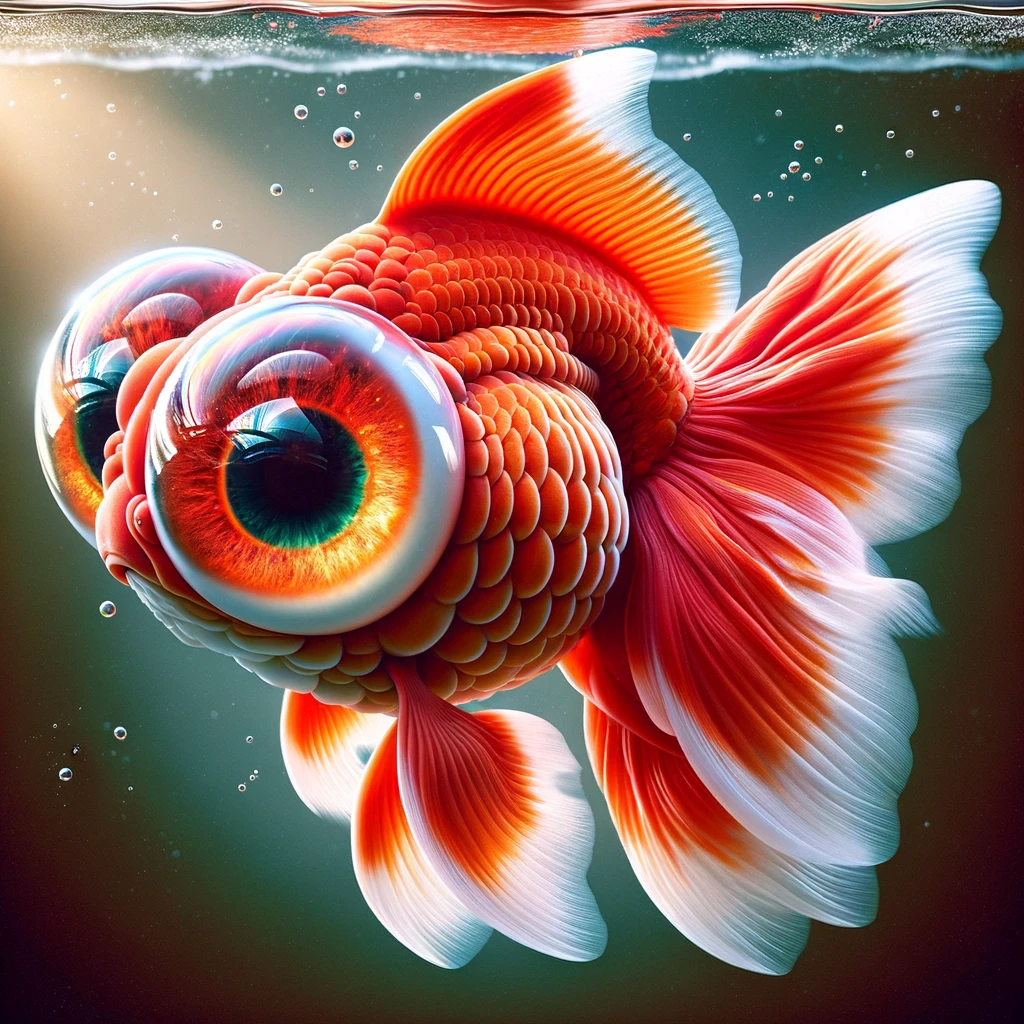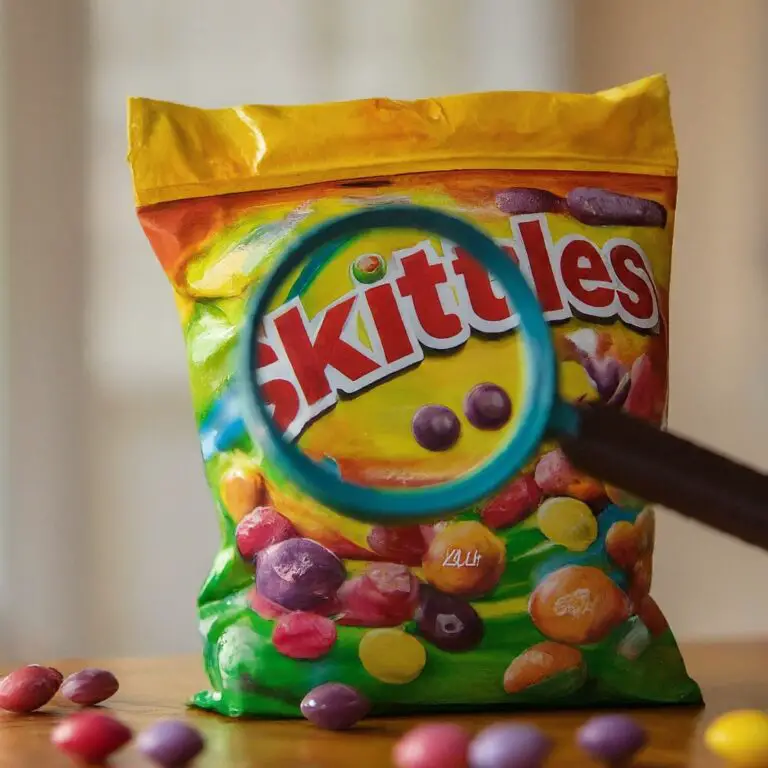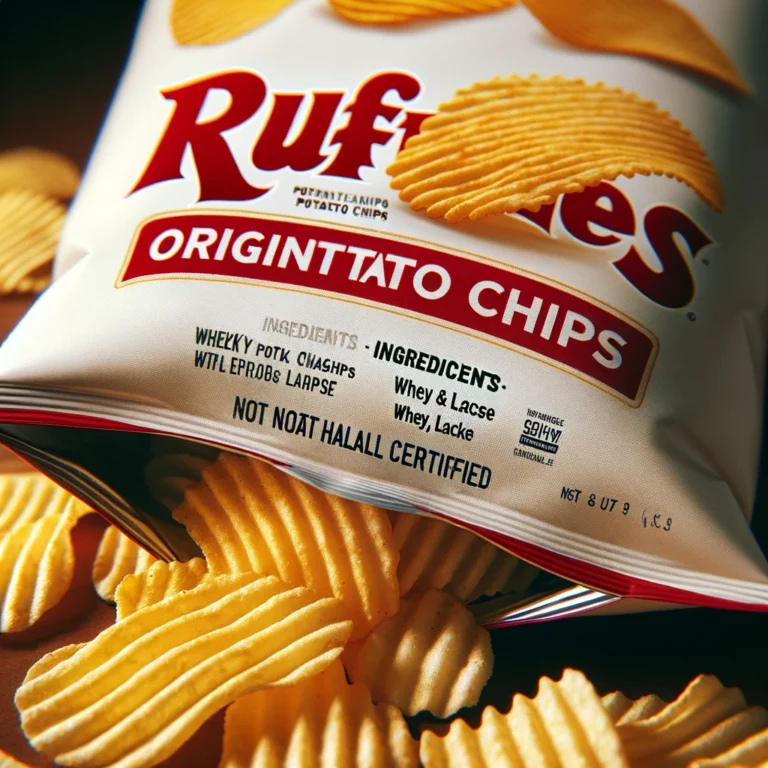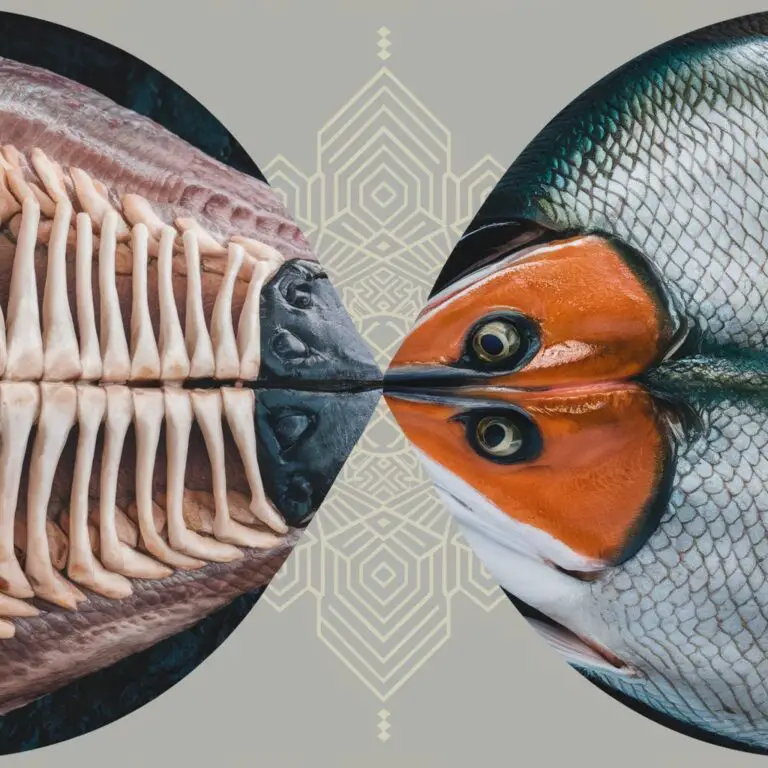are goldfish halal
As one of the most popular aquarium fish, goldfish bring beauty and delight to fishkeepers around the world. With their vibrant colors, flowing fins, and quirky behaviors, goldfish make a charming addition to both indoor and outdoor ponds.
However, successfully keeping healthy, thriving goldfish requires an understanding of their complex care needs. As former members of the carp family that lived in the Yangtze River in China, goldfish need specific water conditions, nutrition, and space to enable their long lifespans.
This complete goldfish care guide draws on the expertise of experienced aquarists to explore everything you need to know about properly caring for these personable fish. Follow these goldfish care tips, and your fish will live for up to 10-15 years or more!
Goldfish Species and Types
With over 125 varieties, goldfish come in diverse shapes, sizes, fin types, and colors. From the common goldfish to the celestial eye, bristol shubunkin, black moor, and more, each variety has its own unique look and personality.
The four main types of goldfish include:
- Single-tailed – Feature one sleek, single caudal fin. Common examples are common goldfish and comets.
- Twin-tailed – Have two distinct tail fins joined in the middle. Examples are fantails and veiltails.
- Bubble-eyes – Have large fluid-filled sacs under the eyes that aid buoyancy.
- Eggfish – Have an ovular, egg-shaped body form. The celestial eye and bubble eye varieties fall under this type.
Most Popular Goldfish Breeds
While selective breeding has created many goldfish varieties, several breeds stand out as aquarium favorites:
Comet
- Streamlined, single-tailed variety
- Bright orange and red coloration
- Can grow over 12 inches long
Fantail
- Features a split caudal fin
- Metallic color variations
- Maximum 6-8 inch length
Black Moor
- Features characteristic protruding eyes
- Entirely black coloration
- Grows to 6-8 inches long
Celestial Eye
- Features pronounced fluid-filled sacs under eyes
- Delicate fins and flowing tails
- Grows to 6 inches maximum
This covers some of the most common goldfish breeds, but there are many more unique varieties to explore!
Goldfish Care Guide: Habitat, Diet, & Health
Successfully keeping goldfish over their long lifespans requires carefully meeting their care needs. Use this goldfish care checklist to ensure your fish thrive:
As former carp, goldfish need sufficient swimming room and horizontal tank dimensions. Follow these goldfish habitat guidelines:
- Minimum Tank Size: 20-30 gallons for first fish, +10-20 gallons per additional fish
- Ideal Tank Size: 75-90 gallon tank for two fancy goldfish
- Tank Shape: Prioritize length over height. Long rectangles are ideal.
- Substrate: Smooth gravel or sandy bottom
- Plants: Hearty varieties like anubias or java fern
- Filtration: Canister filter sized for larger tank
- Water Flow: Moderate current from filter outflow
- Water Temperature: 65-75°F (18-24°C)
- Tankmates: Other peaceful fish like white cloud mountain minnows
Make sure to cycle your aquarium before adding fish to build up beneficial bacteria that processes waste. Perform regular water changes to remove nitrates and replenish minerals.
Water Conditions
Goldfish thrive in pristine, high-quality water:
- pH: Ideal range 6.5-7.5
- General Hardness (GH): 10-20 dGH, 180-360 ppm
- Ammonia and nitrites: 0 ppm
- Nitrates: Under 30 ppm
Use an aquarium test kit to monitor levels and make adjustments as needed with products like Seachem Neutral Regulator. Keep nitrates down with gravel vacuuming and sufficient filtration.
Feeding Your Goldfish
Goldfish are omnivores that will eat a varied diet in captivity. Feed them a mix of:
- High-quality goldfish or koi pellets
- Greens like spinach, kale, & zucchini
- Frozen foods like bloodworms & brine shrimp
- Daphnia, mosquito larvae, other live foods
Feed several small meals 2-3 times per day. Only offer what they can consume within 2-3 minutes to prevent waste buildup and obesity.
Goldfish Health and Disease Prevention
Keep your goldfish healthy and prevent disease with these tips:
- Quarantine new fish for 3-4 weeks
- Disinfect plants and decor before adding to tank
- Maintain excellent water quality
- Varied, vitamin-rich diet strengthens immune system
- Watch for signs of illness like clamped fins or flashing
Common goldfish diseases to watch for include:
- Ich – White salt-like spots on skin and fins
- Fin rot – Ragged, deteriorating fins
- Flukes – Scratching on surfaces, clamped fins
- Swim bladder disorder – Floating, inability to dive
- Dropsy – Raised scales, bloated body
Treat most goldfish diseases with medications like API General Cure or ich-x. Quarantine sick fish promptly to prevent transmission.
Caring for Fancy Goldfish Varieties
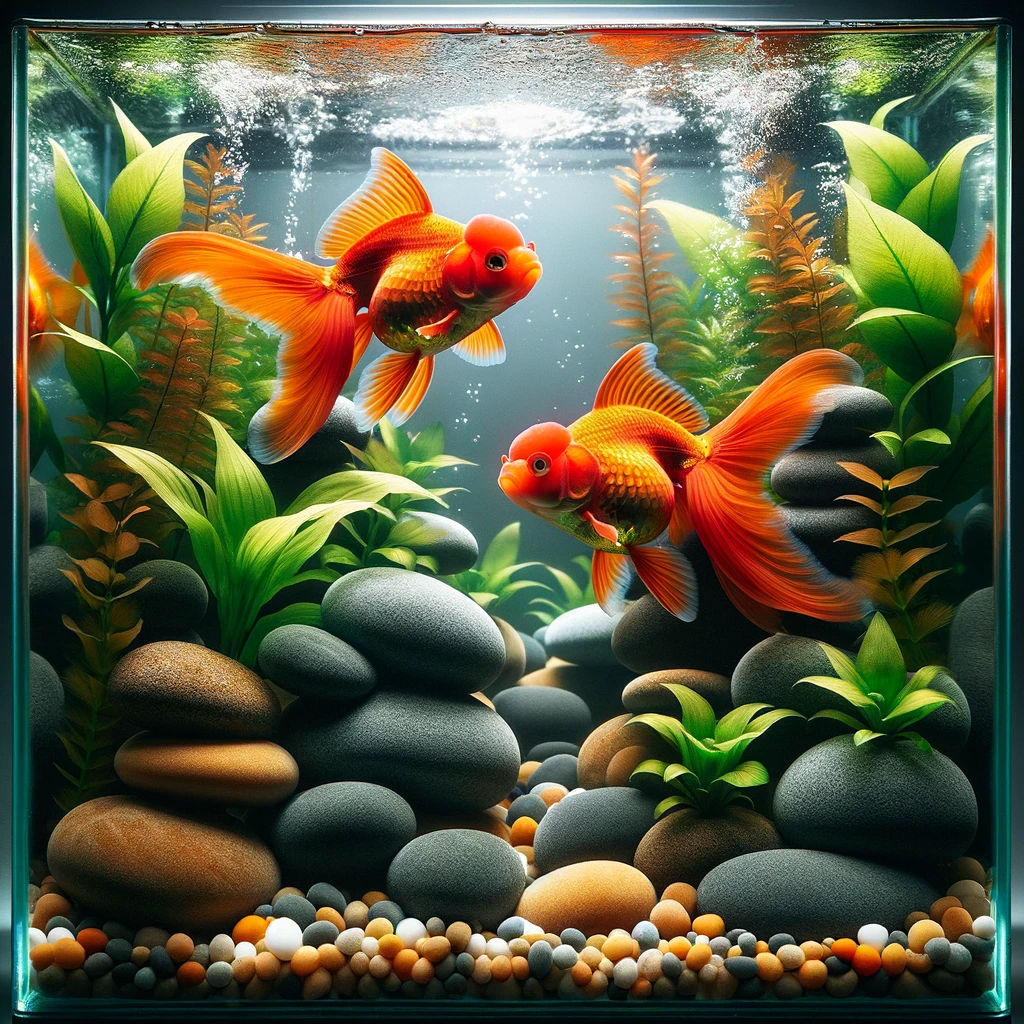
The unique body shapes and features of fancy goldfish varieties create some specific care requirements to keep them healthy.
1. Sensitive Flowing Fins
Varieties like fantails, black moors, and pearlscales have lengthy flowing fins that are prone to nipping from tankmates and catching on decor.
House fancy goldfish alone or with similar-shaped fancy varieties to prevent fin damage.
Their heavy bodies also make swimming difficult, so limit water flow and provide resting spots near the bottom.
2. Buoyancy Issues
Egg-shaped fancy goldfish like celestial eyes and bubble eyes can have buoyancy problems due to their proportions. The fluid-filled sacs under the eyes of celestial goldfish also influence buoyancy.
Provide plenty of hiding spots and dense plants to rest on near the substrate. Floating plastic plants work well.
Feed vegetables high in fiber to prevent constipation and swim bladder issues. Soak dry foods to prevent bloating.
3. Protruding Eyes
Varieties like celestial eyes and black moors have eyes that protrude outside the head. This leaves them prone to injury and infection.
Use smooth decor and plants without sharp edges or abrasive surfaces. Maintain pristine water to prevent eye infections.
Check protruding eyes frequently for signs scratches, cloudiness, or pop-eye, and quarantine fish promptly for treatment.
With some special considerations, fancier goldfish can thrive under captive care. Pay extra attention to their unique traits!
Caring for Goldfish in Ponds
Beyond indoor aquariums, goldfish also make a lovely addition to outdoor garden ponds. But raising goldfish in ponds brings some extra care considerations.
Pond Size
Goldfish become large in pond settings. Plan for at least 20-30 gallons per goldfish. Size your pond to comfortably hold its future fully-grown occupants.
Pond Setup
Goldfish are tough, but certain pond features help them stay healthy:
- Pond depths up to 5 feet allow swimming room as they grow
- Gentle waterfall filters improve oxygen circulation
- Gravel and pond plants provide beneficial bacteria
- Partial shade protects from intense sun
Install pond equipment like pumps, filters, and heaters in deeper zones to prevent winter freezing.
Predator Protection
Raccoons and birds find goldfish easy prey. Protect goldfish with:
- Mesh pond covers over part or all of the pond
- Hiding places among plants and decor
- Minimum pond depth of 2-3 feet
- Removing fallen leaves covering surface
Bring young fish inside over winter until they mature.
Follow these tips, and your goldfish can enjoy their natural long lifespan of up to 15 years or more!
History and Origins of Goldfish Breeds
Understanding the history and origins of goldfish enables appreciation for how these iconic fish came to captivate aquarists worldwide.
Ancient Chinese Origins
The ancestral origins of today’s goldfish trace back to the common carp native to the Yangtze River region and other inland waterways of ancient China over 2,000 years ago.
Chinese fishermen likely first noticed yellowish-gold color mutations of the brown carp. Some fish displayed other traits like twin tails, protruding eyes, or egg-shaped bodies.
Seeing aesthetic value in these unique fish, Chinese breeders selectively bred carp to develop the goldfish varieties passed down through generations over centuries. Their vibrant colors and flowing fins held symbolic meaning in Chinese art and culture.
As selective breeding continued through ancient Chinese dynasties, goldfish evolved into the recognized breeds today. China’s isolation from much of the world kept goldfish unknown internationally until the 1500s.
Earliest Goldfish Timeline
- Native brown carp present in China’s inland rivers
- Gold color mutations observed by ~500-300 BCE
- Chinese breed fancy varieties from carp mutations
- Colorful goldfish kept in ornamental ponds from ~1000 CE
- Goldfish first exported abroad ~1500s
Global Goldfish Popularity
Goldfish first became known globally in the 16th century as Asian trade expanded to Europe and beyond. By the early-mid 1700s they were common in central Europe after being imported through seaports by British and Portuguese merchants and traders.
Key Moments in Global Goldfish Spread
- ~1500s: Goldfish likely reach Portugal through traders
- ~1600s: Goldfish become popular across central Europe
- 1728 First goldfish import to North America
- 1840s-70s Fancy goldfish breeds gain favor in Victorian England
- 1898 First mass import of goldfish to US for domestic ponds
- 20th century Mass production makes goldfish globally popular
Through the centuries, goldfish cemented themselves internationally not just as pets, but as cultural symbols of peace, prosperity, luck, and friendship.
Today goldfish number as one of the most commonly kept aquarium fish worldwide thanks to centuries of domestication from a brown Chinese carp into a globally iconic fish.
Frequently Asked Goldfish Care Questions
New goldfish keepers often have questions come up while learning to properly care for these fish. Review answers to some commonly asked goldfish care questions below.
How long do goldfish live?
With proper care and diet, goldfish typically live 10-15 years on average. Some well cared for pet goldfish have reached over 30 years old! Their long lifespan means a commitment when getting goldfish.
Do goldfish grow to the size of their tank?
No, goldfish cannot be stunt to remain small. If kept in too small of a tank, they become severely deformed and sick. Allow them to reach 12 inches or more in properly sized tanks and ponds.
What temperature water should goldfish have?
Goldfish prefer cool water 65-75°F (18-24°C). Fancy goldfish fare better toward the higher end from 72-74°F as cold slows digestion. Avoid dramatic temperature fluctuations.
Can goldfish live alone?
While social, goldfish can live alone without issues if given enough space. Some single goldfish prefer solitary life over crowded conditions. Introduce tank mates slowly.
What plants can goldfish have?
Goldfish nibble soft-leaved plants. Choose tough varieties like anubias, java fern, hornwort, anacharis, and marimo moss balls. Floating plants are also safe picks.
Can goldfish eat bread or lettuce?
Bread and lettuce offer little nutrition. Feed protein-rich pellets and gel foods instead along with supplemental veggies like shelled peas. Offer treats sparingly.
Hopefully these goldfish care tips gave you all the information you need to feel prepared and confident in keeping healthy, thriving goldfish! Let me know if you have any other goldfish care questions.

